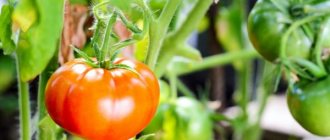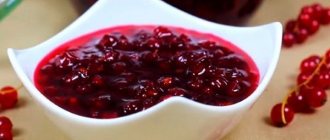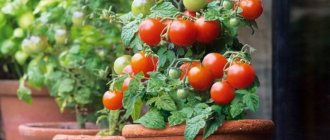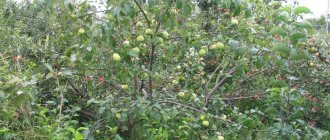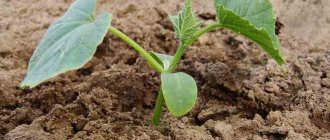Strawberries are a very tasty and healthy berry. It contains many microelements (phosphorus, magnesium, calcium), vitamins, folic acid. Unfortunately, its fruiting does not last long and in the remaining months you have to buy imported or greenhouse berries. Of course, berries grown independently are the most delicious. How wonderful it would be if berries grew on our balcony or windowsill!
It turns out that you can grow strawberries on your windowsill all year round. The main thing is to choose suitable varieties of strawberries and create the necessary conditions. Investments in this venture are minimal. You will need to buy several seedlings and soil mixture. So, how to grow strawberries at home?
Can strawberries be grown in pots?
The depth of the strawberry root system is small, which makes it possible to place the crop in a pot. Outside, you can plant any favorite variety in a container. The main thing is to choose a container of comfortable sizes for it, suitable soil and a sufficiently lit place .
If you want not only to get delicious berries grown in a pot, but also to make a decorative element out of the planting, then you should give preference to remontant hanging varieties of strawberries. Some of them look very decorative, bloom for a long time and, among other things, produce good harvests.
To grow at home, you need to choose day-neutral varieties. This will allow you to get sweet berries all year round.
Important! 100 g of strawberries contain 98% of the daily requirement of vitamin C. Thanks to its composition of nutrients, this sweet berry reduces the level
«
harmful
»
cholesterol in the blood and improves cardiovascular activity.
Which seeds are best to choose?
Strawberries are not small elongated berries, similar to wild ones. Almost everything that grows in our gardens and on an industrial scale bears this name.
The following varieties are suitable for growing strawberries on a windowsill from seeds:
- Murano;
- Furor;
- Monterey;
- Albion;
- San Andreas;
- Vivara;
- Regina;
- Alexandrina.
From a mustache or a bush - you can try any remontant varieties, for example, Aisha and Albion showed themselves very well.
Features of the growing method
The method of growing strawberries in pots has recently become increasingly popular. It has many advantages compared to growing in beds.
Advantages
- This method of growing may be of interest to the following:
- Plants grown in pots can make beautiful and interesting decorations. Using various devices, you can use them to create beautiful vertical gardening. You can use flowerpots or structures for laying out a pyramid for this, or decorate a fence or recreation area. A hanging pot with blooming ampelous strawberries can decorate a balcony, kitchen or local area.
- Space saving. If you don’t have enough sunny space on your site, then pots of strawberries can be placed on a sun-lit paved area, placed on a shelf attached to a fence or wall, or placed on the roof of the garage. Multi-tiered accommodation options are the most economical.
- Ease of movement. Such “beds” can be easily moved from one place to another. For example, during periods of scorching sun and heat, it is convenient to move the pots to a less hot place. During cold weather, they can be placed indoors and thereby extend the period of fruit production.
- It is more convenient to collect fruits from a strawberry bush growing in containers, especially if you place them at a level that is comfortable for you.
- The berries do not touch the ground and, as a result, are less susceptible to spoilage and contamination.
- Possibility of creating better conditions. A pot with a plant can be placed in a place with the desired level of lighting, removed from the street during hail or excessive precipitation, moved to a warmer place, or changed the soil.
Flaws
- The method of growing strawberries in containers has some disadvantages:
- Incurs material costs. This method requires the purchase of suitable containers and devices.
- Variety You will have to carefully approach the choice of planting material with certain varietal characteristics. After all, not every variety is suitable for year-round cultivation at home or for vertical gardening.
- Labor costs. It will take time to plant, replant and more frequent watering. The soil in containers dries out and depletes faster than in garden beds.
Did you know? Strawberries contain antioxidants and ellagic acid, which regulates the cell cycle and strengthens the immune system, which makes its consumption prevent cancer.
Winter is just around the corner
When winter is upon us, strawberries grown in flower pots need to be prepared for winter. Only lower annual plants in pots into the basement, which will bear fruit abundantly next summer. Old bushes that have bear fruit for several years are destroyed.
They completely replace the soil before lowering the pots of strawberries into the basement. This is very convenient, as the amount of spring work is reduced. In spring, plants in pots will grow faster and you can expect an early harvest of berries.
While the bushes bear fruit, they can be kept in the house. After the end of fruiting of the bushes, the above-ground part is cut off, and the pots are sent for wintering until spring. If you don’t cut the stems, they will rot, and in the spring such a bush will be of no use.
The best strawberry varieties for planting in pots
For growing in containers, the best choice would be remontant strawberry varieties that bear fruit all summer and until frost. At home, day-neutral varieties can be used on the windowsill, which produce flower buds year-round.
The most promising remontant varieties for growing in pots are the following:
- Supreme Excellent for growing in an apartment. It does not require pollination, bears fruit year-round and is a day-neutral variety. Productivity and taste are also excellent. The variety is winter-hardy and drought-resistant.
- Homemade delicacy. This hybrid can be grown in small pots. Produces many small fruits of excellent taste. Drying out the soil leads to their even smaller size.
- Moscow delicacy . A high-yielding, day-neutral hybrid from Dutch breeders. One bush produces a harvest of up to 1.5 kg of berries weighing 15–35 g.
- Felice. It looks very decorative, blooms for a long time with bright burgundy flowers. This day-neutral variety produces good yields of aromatic, relatively large (15–20 g) berries with a strawberry flavor.
- World debut. Continuous blooming with pink flowers on tall peduncles and fruiting from May until lasting frosts. The fruits weigh up to 35 g and have a pronounced smell.
- Capri . Day-neutral variety of Italian selection with excellent sugar accumulation. It has sweet fruits even at the stage of technical ripeness. The variety is large-fruited and productive, resistant to drought, frost, and disease.
- Temptation. A productive day-neutral hybrid with excellent fruit taste. Blooms and bears fruit continuously. It grows whiskers well, which bloom without taking root. Suitable for growing as a hanging plant.
- Lyubava. Large-fruited, productive variety with long fruiting. Good for vertical gardening.
- Vima Rina . Day-neutral strawberries produce harvests from late June until frost. It can be grown on a windowsill and as an hanging plant, tolerates drought and heat well, and adapts to different conditions. The berries have an excellent taste with a pleasant aroma.
- Selva. A day-neutral variety with long tendrils that bloom quickly. Peduncles hold fruit well. Suitable for flowerpots and vertical gardening. It begins to bear fruit early and continues until frost, in several waves of berry ripening.
- Queen Elizabeth. This is a large-fruited, productive variety with a sweet and sour taste. It produces crops almost continuously. A too cramped pot would be unacceptable for this variety, since the variety has a developed root system.
- Albion. A day-neutral variety from the USA with continuous yield and powerful peduncles that do not bend too much under the weight of the fruit. The pulp of the berries is dense and sweet. The variety is drought resistant.
- Monterey . A descendant of Albion, which has the same advantages, but has higher yield and quality of fruit.
Did you know? Despite their sweet taste, strawberries contain little sugar and have a low glycemic index (25) and contain few calories (32 kcal/100 g). Consumption of this berry is acceptable for diabetics and it will not spoil the figure.
How to plant strawberries from seeds
Sowing is carried out in January-March. Fill the seedling box with soil, lightly tamp it down and moisten it with a spray bottle. Strawberry seeds are light-germinating, that is, they do not need to be sprinkled with soil, just scattered over the surface. Some varieties require stratification; they need to be sprinkled with snow on top. All the subtleties of sowing a certain variety of strawberries can be learned from the instructions given on the bag of seeds. Cover the soil in the planting box with glass (the gap between the soil and the glass should be 5 mm) and constantly maintain a slight moisture content on the soil surface.
Do not water seeds from a watering can, use only sprayers. It is important that condensation does not accumulate on the glass: it can lead to the appearance of fungal diseases and the death of seedlings. The timing of seed germination is individual for each variety. When the shoots appear, remove the glass and cover the box with a transparent cap, monitor the humidity inside this mini-greenhouse. As soon as the seedlings produce their second leaf, plant them in separate pots. Seedlings need a lot of light to grow - place the pots in the sunniest window and illuminate them with special lamps. Do not overwater the sprouts; maintain moderate humidity. In spring and early summer, strawberries begin to grow rapidly. Many varieties bloom already in July-August. Each bush of large-fruited strawberries produces 2-4 berries per day, and small-fruited varieties produce even more.
Preparing the pot, soil and planting material
Regular flower pots, cache-pots or oblong-shaped plastic containers are well suited for growing this sweet berry. To save money, you can use mayonnaise buckets as a planting container, as well as 5-liter plastic bottles, the top of which is first cut off. Such pots can be decorated to your taste - painted, pasted on patterns of beads, shells and other materials suitable for decoration. The dimensions of the planting container can be different and depend, first of all, on the amount of planting material. A suitable volume is considered to be 3–10 liters.
Containers for planting must have holes to drain excess liquid.
If they are not there, then you need to make the holes yourself. The roots of the plant go 25–30 cm deep into the soil. Therefore, containers for planting should be slightly larger in height than the specified dimensions. It is advisable to choose a pot of light colors, since a dark color attracts the rays of the sun, and the lower part may become excessively hot.
Treatment against diseases and pests
During fruit development, strawberries may be attacked by spider mites or such an unpleasant disease as gray rot. To eliminate these problems, the plant must be irrigated with garlic infusion.
To make this mixture yourself, you will need two cloves of garlic, which are pressed through a garlic press and filled with 100 milliliters of liquid. Infuse the mixture for two hours, after which everything needs to be strained and poured into a spray bottle for further processing of strawberries.
Technology for planting strawberries at home in pots in winter
Planting strawberry bushes occurs as follows:
- The bottom of the pot is lined with a drainage layer of expanded clay or small pebbles.
- Then the rhizomes of the planting material are examined. If they are too long, they are shortened so that they fit neatly in the pot.
- I place the plant in the dug hole, carefully distribute the roots and cover it with soil. The earth is compacted a little.
- Finally, the planting is watered. When moisturizing, it is advisable to use a growth stimulator.
When to replant strawberries
If you grow strawberries from seeds sown in a container, then you need to plant them when two true leaves appear. You need to act carefully so as not to damage the delicate parts of the plant.
Replanting tips:
- place several seeds in one cup;
- leave the strongest plant from the seedlings;
- after 4 leaves appear, pour 200 ml into a larger glass;
- When the buds develop, transplant them into a container or liter glass for the last time.
When transplanting or transshipping, make sure that the apical bud (heart) is not covered with soil. Otherwise, the plant will rot.
Further care of the crop
To get a good harvest, you need to organize proper care for strawberries:
- Lighting. It is better to place the plantings in a well-lit place in the house, preferably on a southern windowsill. During the cold period, when daylight hours become short, it is necessary to provide additional lighting up to 12–14 hours of daylight. Fluorescent lamps are well suited for this purpose.
- Watering. It is necessary to ensure that the soil does not dry out. You need to water regularly and quite abundantly. Water for irrigation should be settled and at room temperature.
- Room temperature. The optimal temperature should be +20…+22°C.
- Feeding. During flowering and ripening of the berries, fertilizers must be applied. The procedure is carried out once every 14 days. For this purpose, organic matter and mineral fertilizers are used. A 1:20 manure solution or ash mash is suitable as a natural fertilizer. It is good to use ready-made complex fertilizers, which can be purchased in the store, for example, Kemira Lux. During flowering, it is a good idea to carry out foliar feeding with a solution of boric acid.
- Loosening. To improve the supply of moisture, nutrients and oxygen to the root system, you need to regularly loosen the soil.
When growing strawberries indoors, it is necessary to carry out artificial pollination if the planted variety is not self-pollinating. You can use a fan for this purpose. It is included in the direction of plantings with strawberries. Air currents carry pollen from one plant to other plants. This process can be done manually using a soft bristle brush. It is carried from one flower to another.
When a warm period sets in, the pots can be taken out into the yard, loggia or balcony. When outdoors, pollination occurs naturally with the help of wind and insects.
Populating the greenhouse
Shelves for growing strawberries in flower pots are located almost under the ceiling of the greenhouse; below, at the end of April, determinate varieties of tomatoes are planted, the height of which does not exceed 1 meter. In April, you can sow greens, radishes, and Chinese cabbage there. For clarity, you can watch a video about growing Clery strawberries in pots suspended in a greenhouse:
It is better to place a shelf for pots in the greenhouse on the south side. Transplant the seedlings into flower pots with a volume of at least 2 liters. We prepared our own soil according to the recipe described above. The bottom of the pot should have one or more holes. The first layer in the drainage pot is medium-sized expanded clay.
It is a pleasure to care for strawberries when growing them in a flowerpot installed on a shelf. All care work: watering, fertilizing, removing old leaves and fruit-bearing peduncles, picking berries are a pleasure even for older people who often have back pain, they do not cause inconvenience.
What to do with a mustache
On seedlings of the first year of life, the harvest of berries may be on the mustache. In order not to weaken the young plant, you should leave no more than 2 rosettes on each bush. Regularly pinch off excess rosettes as they appear. The number of ovaries on each peduncle in each rosette must be normalized.
This technology for growing strawberries in pots allows you to get strong plants from your seedlings within a year, producing a bountiful harvest of delicious berries.
A little about watering and fertilizing
It is more correct to water plants through trays. Dry soil serves as a signal for watering. With overhead watering, it is difficult to control soil moisture. Beginners often make the mistake of pouring strawberries. Overwatering leads to diseases - root rot, and they most often end in the death of strawberry bushes.
Too wet soil impairs the access of oxygen to the roots of strawberries, this immediately affects the plant’s growth rate, flowering and fruiting. Fertilizing when growing strawberries in pots is carried out weekly.
For healthy growth, strawberries need microelements:
All of them are contained in mineral fertilizers. To avoid nitrogen starvation, strawberries are fertilized with urea. Strawberries especially need potassium fertilizers in spring. Those who categorically do not like chemistry prefer to fertilize strawberries in pots with fermented milk products, adding an infusion of ash to them.
With the help of foliar fertilizing with infusion of ash and a solution of potassium permanganate, long-term fruiting of strawberries grown in pots installed in a greenhouse on racks is achieved. High-yield varieties of modern remontant berries bear fruit in the greenhouse until late autumn.
As soon as the first flower stalks appear, they need to be plucked off. This is necessary so that the bush grows enough green mass for abundant fruiting. You will have to wait for the first berries, but the bushes will be stronger. Of the 7–9 flowers on the peduncle, only 4 or 3 should be left.
This technique allows you to get large berries from remontant strawberries grown in pots throughout the summer. If you refuse to ration the harvest, you will have to be content with small berries. Only the first fruits will be large on strawberries.
Pests
Shelving does not protect against all pests. Insects may encroach on strawberry bushes grown in pots in a greenhouse. In order to eat delicious berries without fear, it is better to do without chemicals. To do this, just pour boiling water over dried celandine, crushed dry nettle and hot pepper in pods to get a life-saving infusion against strawberry pests.
The infusion must stand all night to gain the required strength. In the morning, before the sun begins to burn, strawberries in pots can be sprayed. Carry out the treatment after 17-00, if in the morning there was no time to treat the strawberry bushes from pests.
Filling the container with soil
Strawberries are demanding on soil nutrition, and growing the crop in pots requires a limited volume of soil, which is quickly depleted by plant roots. That is why, even at the stage of creating a strawberry pot, it is necessary to take care of the nutritional value of the filler. Thus, the optimal soil composition should include a mixture of turf soil and humus in a 1:1 ratio. A couple of spoons of nitroammophoska per 5 liters of soil will also allow you to add some necessary minerals to the soil.
Nutrient soil is poured into the pot on top of the drainage layer. During the process of growing strawberries, the nutritional value of the soil is periodically increased by applying mineral fertilizers.


